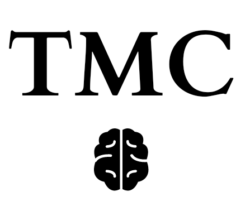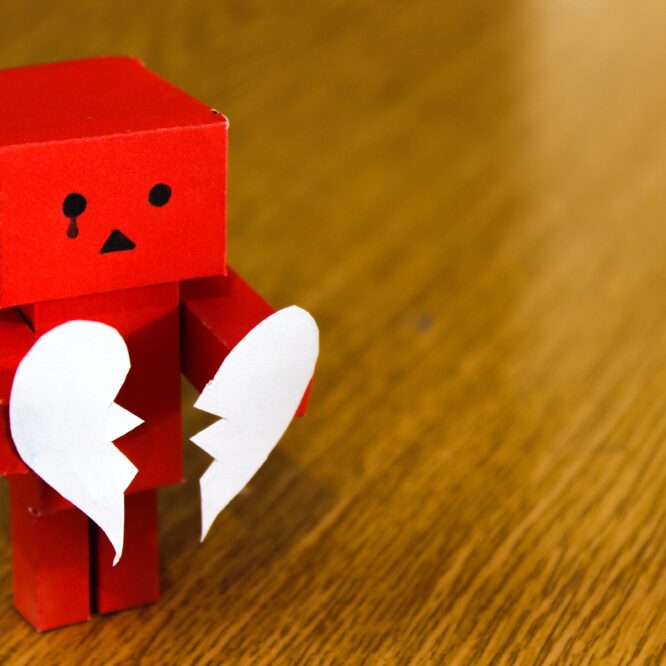Cognitive Disorder –Modern Symptoms of a ‘Generation’.
Cognitive disorder
Looking back on your childhood, did your parents ever restrict your movements? Could you come and go as a child, play out in the street with your friends, walk or cycle to local parks for hours on end, roam for miles over local fields with your friends and get home just in time for dinner and at dusk? Did your parents trust you to be able to negotiate busy streets, not talk to strangers… in fact trust you to tell them where you were going and what time you would be home?
Depending on your age group, your answer could be ‘Yes’ or ‘Are you crazy?’!
Prior to the 1990’s, all of the above (and more) was not only acceptable, but common. The majority of parents placed a high level of trust in their children to keep themselves safe and also society as a whole. Children experientially learned from such independence and freedom.
And yet, there were no mobile phones, no tracking devices, few parents with the time or interest to ‘play out’ with their kids, to police their safety, to account for their whereabouts 24 hours a day.
Were those days safer than now for children to play alone? Arguably no. American studies have indicated that crimes against children have actually decreased and that trend seems to be continuing (1).
Therefore, with so much technology available to safeguard children and so much more focus on the welfare of children now, why is it incredibly rare for children in the West to be allowed to play unsupervised like they could do years ago? More importantly, what are the wider impacts of isolating children at home and managing their every moment?
A topical but not very pleasant description of young adults, perpetrated by the media and certain commentators on society, is ‘snowflakes’ or ‘the snowflake generation’ (2), describing them as feeling entitled, demanding, unable to cope with normal levels of stress, being uncommunicative, feeling deprived, having a resentment for older generations, etc.
Mental disorders
In fact, it is now thought that the term ‘snowflake’ can increase the mental disorders of young adults in itself, which seems to underscore the fact that cognitive disorder amongst young adults are on the increase! (3)
If this is true, then what are the causes?
For a child to become a normal, healthy, mentally strong adult member of society, they need robust and positive parenting, which provides stability and confidence. They also require the opportunity to gain experience of life on their own. Parents who provide such a positive environment also provide a high level of trust in their child.
However, since the dawn of the internet in the 1990s, things have changed fundamentally. With an open platform available to billions of people to obsess over and share information, a level of fear that didn’t seem to exist previously has developed in adults and there are signs of transference of that fear by those who are parents to their children.
Where does the fear come from?
In the past, the news in newspapers was at least a day old – news should have been called ‘olds’! Stories of crime were limited to a few newspapers, compared to the number of online sources of news on the internet available today. Therefore the same stories are continually layered and emphasised: it’s difficult to get away from and forget when the stories are available from so many sources. And what exacerbates that is the fact that news now is so dynamic, being published as soon as the story is discovered.
Such an impact on our psyches creates an illusion that there is so much more crime than in times past. A great example is the fear of paedophiles and child abduction. Were there less paedophiles 30 years ago than there are now? It’s difficult to find statistics on this and there may indeed be an increase, but arguably this could be caused by the amount of ‘oxygen’ provided by online sources, compared to the fact that in pre-internet times, it was very likely that information and material related to such crimes was likely to be underground and therefore difficult for such criminals to access.
However, a great deal of parents are so fearful of such crime, it seems there could be a paedophile on every street corner! We have seen examples in the news of vigilantes actually murdering people they assumed to be child predators, when in fact the person was subsequently found to be totally innocent (4). These are extreme and somewhat isolated cases, but illustrate how paranoia caused by assumptions about stuff read online can be fatal.
This information overload has a negative effect on our brains. With social media and the information (and as importantly, disinformation), available to people via the internet in general, this level of fear causes children to be kept at home and deprived of the freedom and experiences of their parents and grandparents. Micro-management and the constant chaperoning of children restricts growth.
From parent to child
This transmittable neurosis effectively removes childhood experiences from the past that are essential for developing healthy adults. Parents may talk to their children about their own childhoods and how ‘life used to be so much easier’, but that second hand experience does nothing to allay cognitive disorder that develop as the child gets older.
A ripple-effect of this perceived fear then expands throughout society to the point where children left alone to play outside can be considered a risk by the authorities, bruises where they fall out of a tree for example can be reported by medics to the authorities, thus creating unsubstantiated suspicion over innocent parents, kids are afraid to cross roads without an adult to accompany them – effectively fear has become a self-generating impact on society as a whole.
How does cognitive disorder manifest?
When fear transference occurs, it’s likely to impact the cognitive development process in children. Without a certain level of independence, children cannot experience potential danger and therefore cannot differentiate between low- and high-risk situations.
They effectively become anxious adults, often fearful of previously-perceived mild situations, fearful of exploring their worlds fully, being over-protective of their own children, etc. This anxiety creates a blame culture, with young adults being unable to accept responsibility for their life situations due to the past deprivation of independence in their childhoods.
Being kept at home, they are unable to release as much energy as past generations, finding video gaming and TV easy alternatives to being outside and playing. Parents of younger children often use the TV as a passive child minder, whilst they get on with daily chores. Those children that are allowed to play violent games or watch negative TV shows have further negative impacts on their cognitive development (5). These children can develop health disorders related to lack of fitness due to being sedentary most of their spare time (6) (you can look in any park or school playground and notice those kids that have difficulty simply running due to lack of exercise!).
Social skills can be impacted, by children only seeing their peers at school and not mixing with other kids from the neighbourhood who attend other schools.
Over the last 30 years, have we created a generation of weak adults. Is the phrase ‘snowflake generation’ somewhat accurate? If so, what are the solutions?
Parents that can afford to, or those with the imagination or intention to, take their children to clubs such as Scouting, football, marshal arts, gymnastics and others, alleviate these disorders somewhat, with their children tasting some of the experiences of their parents’ independent childhoods.
However, many clubs are usually very safe and risk-free environments, so the comparison to past childhoods is limited, although activities such as Scouting teach kids independence and ‘old-fashioned’ skills and as a result, provide a much higher level of independence that those that do not attend such clubs.
In conclusion it would seem that cognitive disorders are on the increase amongst young adults and it’s likely to be caused by the birth of the internet.
References
(1) David Finkelhor and Lisa Jones (2006). Why have Child Maltreatment and Child Victimization Declined / Finkelhor, D., Saito, K., & Jones, L. (2016). Updated Trends in Child Maltreatment, 2014.
(2) https://en.wikipedia.org/wiki/Generation_Snowflake /
(3) http://www.telegraph.co.uk/news/2017/12/06/dont-call-us-snowflakes-damages-mental-health-say-young-people/
(4) https://www.mirror.co.uk/news/uk-news/daughter-innocent-dad-killed-paedophile-8281536 / http://www.dailymail.co.uk/news/article-2478285/Innocent-man-burned-death-vigilante-neighbours-mistook-paedophile.html
(5) http://journals.sagepub.com/doi/abs/10.1111/1467-9280.00366
(6) https://www.nature.com/articles/nrn2298
What are your thoughts of the cognitive disorder of a modern generation?

